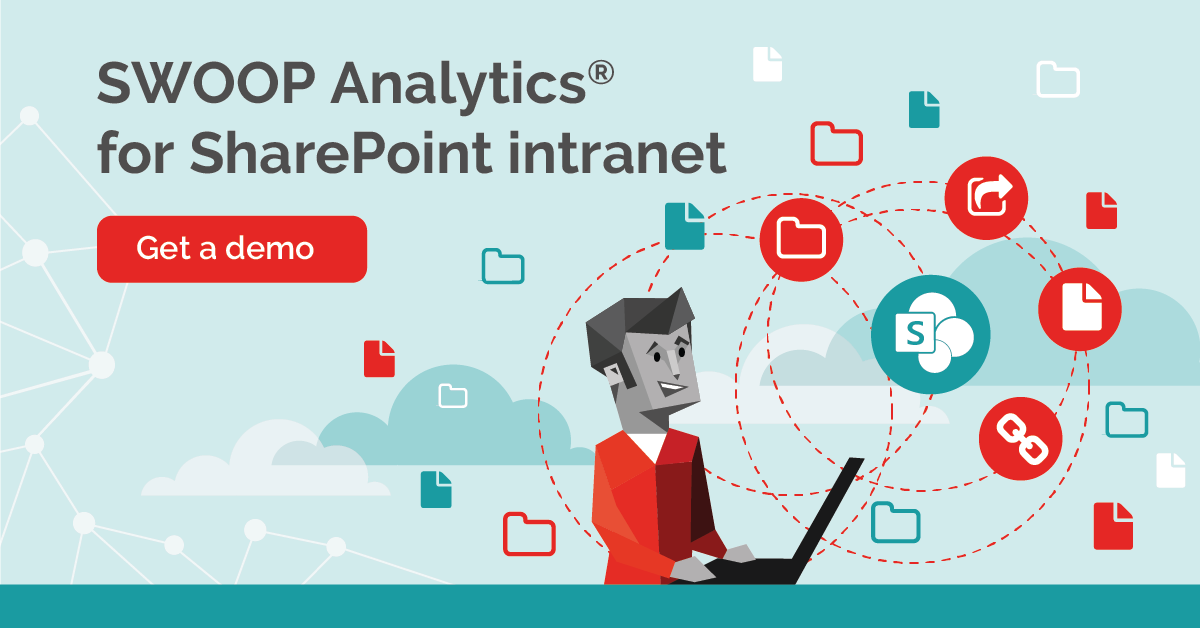Syngenta – building a successful SharePoint Online intranet
Within days of launching a new out-of-the-box SharePoint Online intranet, the average time spent on agri-tech organisation Syngenta’s intranet home page increased from 0.3 seconds to two minutes and 40 seconds.
If you’re an IT, HR or internal communications professional, you’re probably (enviously) thinking; “How did they do that?”
The simple answer is that Syngenta moved from a complicated and customised intranet to a simple, minimalist SharePoint Online intranet that just worked.
Importantly, they listened to the end users and created an intranet people could use, that was up-to-date, had the information it’s 38,000 people spread across 90 countries needed, and was easy to navigate.
Getting to this stage of launching a successful intranet took 10 months of work, about 30 (!!) different versions and came after years of battling with SharePoint 2010, followed by a bespoke intranet that was outsourced, difficult and slow to update, riddled with unnecessary complexities and failed to meet Syngenta’s needs.
After months of steering committee meetings in 2022 and negotiations between the IT and internal communications departments, it was finally decided to use SharePoint Online to host the intranet. This decision was made partly because Syngenta was already paying for SharePoint with its M365 subscription and it could access immediate help and support from Microsoft, but mostly because using SharePoint Online allowed Syngenta to have its own in-house team working on, and updating, the intranet. Quick changes could be made, news could be updated – all within minutes rather than the months it sometimes previously took.
In December 2022, Syngenta launched the first version of the new SharePoint Online intranet, with the idea of later adding more features and functionalities and improving the design.
Melinda Schaller, Global Intranet & Content Manager, IT Product Lead – Workplace Technologies, Syngenta.
“When we launched it, we did some immediate feedback surveys and some focus groups and we were pleasantly surprised to learn that people actually liked the minimalist approach,” said Melinda Schaller, Global Intranet & Content Manager, IT Product Lead – Workplace Technologies at Syngenta.
“We stripped out the complexities, we stripped out the things people weren’t really engaging with or using anymore and they liked that. They didn’t see any business value in simply going and adding more because we could or because we used to have that.
“People liked the minimalistic approach.”
After years of change during the COVID-19 pandemic, and as employees settled into hybrid work, the last thing they wanted was more change.
“The key thing people said was; ‘It just works’,” Melinda said.
“They weren’t used to having an intranet that was readily available, that functioned as it should, that was stable, that was easy to navigate. It was also faster and more available because SharePoint is a very fast solution.”
Some of the feedback from end users about Syngenta Group’s new SharePoint Online intranet.
The other key thing was the SharePoint Online intranet was easily accessible on all devices – phones, tablets, PCs.
Measuring the “success” of an intranet
While the feedback from end users to the new SharePoint intranet was positive, the data also confirmed success.
Syngenta had been using analytics from SWOOP Analytics for Viva Engage (Yammer) since 2016 so when SWOOP Analytics launched SWOOP Analytics for SharePoint intranet in 2023, Syngenta was one of the early adopters.
Melinda said the time spent on Syngenta’s intranet home page when it first launched was a key indicator for success.
“We’d gone from people spending about 0.3 seconds on our home page to now spending almost 2 mins and about 40 seconds in those first couple of days of our launch,” she said.
“People wanted to engage with it because it was so easy to do so.”
After such positive feedback from end users, and data to reinforce it, the new intranet is no longer a “project” at Syngenta Group but a “product” to continue to manage, update and always improve.
“The intranet should never be done,” Melinda said.
“New features and tools and functionality come out all the time and you want to be able to take advantage of those so that you can stay as up to date as possible.
“We constantly have a team behind it and we’re investing those time and resources to make sure that it is always 100% up to date and it’s reflecting the changing needs of our end users.”
Measuring the “health” of an intranet
Syngenta is guided by data from SWOOP Analytics to know how pages are performing, what content needs improving and what people are engaging with.
“We’re looking a lot more at the data now that we finally have a robust analytics tool. SWOOP Analytics for SharePoint is able to tell us a more in-depth story about how the content is performing, how are people engaging with it, or even if they are engaging with it at all?
“Maybe they’re just not clicking on it? Are they reading it to the end? Whereabouts are they coming from, what language are they reading it in?”
SWOOP Analytics for SharePoint will tell you the health of content on the intranet – identifying spelling mistakes, convoluted or confusing sentences and whether people are engaging in the content.
“This is really helpful to inform the overall editorial strategy that helps the comms teams to decide which channel should I be posting my news on because we don’t just have an intranet, we also have Yammer (Viva Engage), (Microsoft) Teams and Kaltura (in-house video platform),” Melinda said.
“The analytics we can get from using SWOOP across SharePoint, Yammer and M365 is helping us to decide what is best placed on the intranet when it comes to news and internal comms and what should go elsewhere.”
Screenshots of Syngenta’s SWOOP Analytics for SharePoint intranet measures.
How to build a SharePoint intranet
For anyone contemplating creating a new SharePoint intranet, Melinda has a list of key takeaways.
Inspire your stakeholders with what’s possible today, tomorrow and in a year’s time.
Enrol your stakeholders – ensure they are aligned with you and on the same journey.
Listen to your end users - the purpose of the intranet is to be there in the service of end users. Ask them; “What do you want to see on the intranet? What tools and services do you need there? What content would you engage with?”
Functionality and reliability should always trump bells and whistles.
Frequently analyse and act. “You can’t do anything without good data and you can’t make a business case for making any meaningful change unless you have data and analytics that is going to back up what you’re saying,” Melinda said. Data is vital to tell the full picture of how people are interacting and engaging.
Move on from the project phase of building an intranet and move to an improvement phase and one of product management.
Your intranet is never done. Keep improving and evolving it.
Melinda’s key takeaways for a successful intranet.
Melinda’s final encouragement?
“Just do it!,” she said.
“Make a change that will be easier for your end users and help them with what they want to do at the end of the day and that is simply (to) work better.”
Watch Melinda explain the complete journey of Syngenta Group’s intranet implementation:








